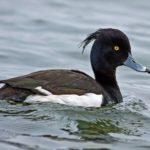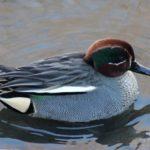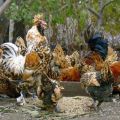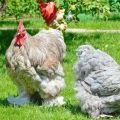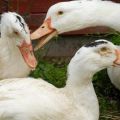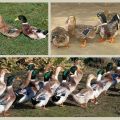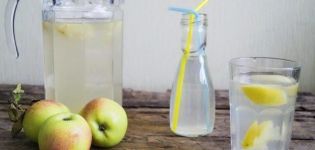Why ducks swim on water and what helps them not get wet, especially birds
The expression "get out of the water" is familiar to everyone. The figurative meaning of the phrase is clear, but an ordinary duck can become a living personification of the direct! Even after a long swim, these birds go ashore, as if after a beauty salon. The plumage lies flat, it is dry and clean. How do birds do it? Why a clumsy duck on land swims and dives so masterly, for sure, many wondered. To understand this, you need to take a closer look at the bird.
Why do the feathers of waterfowl not get wet
The plumage of birds that live near water bodies is covered with a thin layer of fat. It protects the covering of the body from getting wet. Fat also keeps you warm. Water flows down the back, starting from the head, if the duck emerges and floats, so that it does not seep through the dense feather layer.
Birds tidy themselves up after each swim to renew the protective layer on their feathers. A special gland is located near the tail of all feathered waterfowl, which produces grease. Ducks grab it with their beak and carefully rub it into the plumage. Muscle fibers lift the feather shafts. From the outside, it looks like the bird is shaking itself off after water procedures.
She does all these manipulations several times every day to stay afloat.
Scientists have shown that if the fat layer is washed off the duck, it will sink, despite the lightness of the bones and the general supply of air in the lungs.
Presence of membranes
The webbed feet are important devices for locomotion in and under water. Ducks have short legs compared to other birds, but they are strong and located closer to the tail. They have three main toes with membranes and one accessory from the inner edge. It is essential for sustainability.
On land, the gait of the bird looks clubfoot, and the ducks cannot boast of walking speed. Their legs are vertical, when viewed from the front, they are beveled towards the center. When running on such limbs, the feathered may even fall on the chest due to poor balance. In water, the legs are at an angle to the surface. It is thanks to their size and muscle strength that the bird can quickly pick up speed, turn and brake.
Plumage
It is known that ducks can stay in icy water for a long time and calmly move in the snow. Some species even sleep on the waves with their heads tucked under their wings. There is no mystery in this, it's all about a special feather layer.
Thick down is covered with thick feathers. A sufficient layer of warm air remains between them. In addition, the upper feathers are windproof due to the grease lubrication.

Interesting features
Along with everything else, these funny birds have a number of unusual differences:
- The paws of ducks do not freeze even in frost, because there simply are no blood vessels and nerve endings
- The waterfowl holds an air bag on the surface, which, when diving, pushes air to the rear, so that the beak and chest are submerged.
- The third eyelid protects the duck's eyes from debris in muddy water.
- Ducks can dive directly from the surface of the water, while most other birds dive from a height for this.
- When diving, birds regulate depth and speed with their wings and a movable tail.
- They are capable of diving for 7-13 minutes if chasing prey. The average swimming speed is 1 m / s.
- During molting, ducks try to be less in the pond, because there is a risk of losing heat and wetting the renewing feathers.
- The subcutaneous layer of fat also serves as a float and warms birds in frost.
